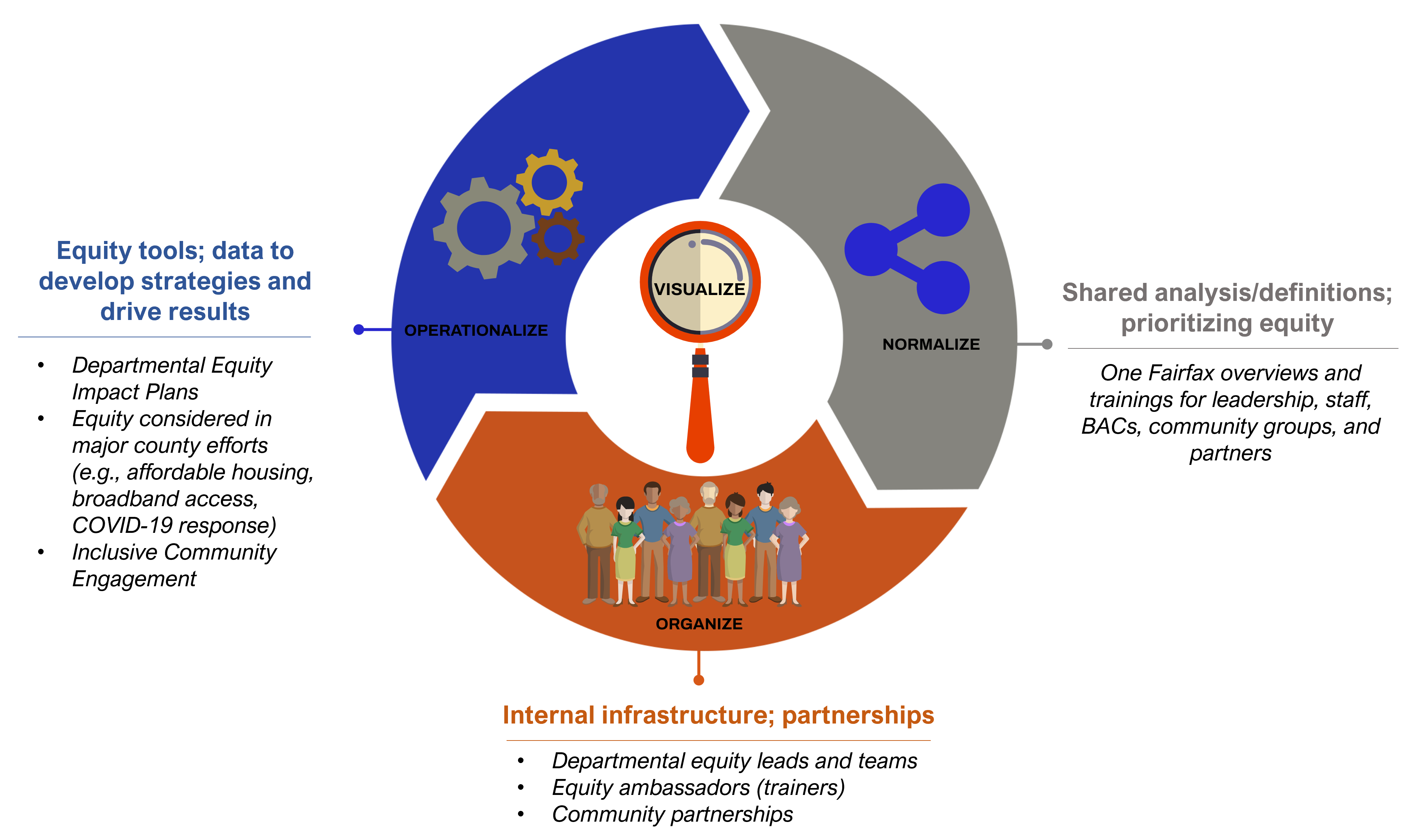 One Fairfax is a joint racial and social equity policy of the Fairfax County Board of Supervisors and School Board. The 2016 One Fairfax Resolution commits the county and schools to intentionally consider equity when making policies or delivering programs and services.
One Fairfax is a joint racial and social equity policy of the Fairfax County Board of Supervisors and School Board. The 2016 One Fairfax Resolution commits the county and schools to intentionally consider equity when making policies or delivering programs and services.
It is the commitment to promote fairness and justice in the formation of public policy that results in all residents – regardless of age, race, color, sex, sexual orientation, gender identity, religion, national origin, marital status, disability, socio-economic status or neighborhood of residence or other characteristics – having opportunity to fully participate in the region’s economic vitality, contribute to its readiness for the future, and connect to its assets and resources.
The One Fairfax Policy establishes shared definitions, focus areas, processes and organizational structure to help county and school leaders to look intentionally, comprehensively and systematically at barriers that may be creating gaps in opportunity. The One Fairfax Policy includes a purpose, definitions, areas of focus to promote equity, process and roles.
ON THIS PAGE: Why One Fairfax?; Stakeholder Engagement; 5 Key Equity Drivers; Resources








 CHAIRMAN'S TASK FORCE ON EQUITY AND OPPORTUNITY
CHAIRMAN'S TASK FORCE ON EQUITY AND OPPORTUNITY